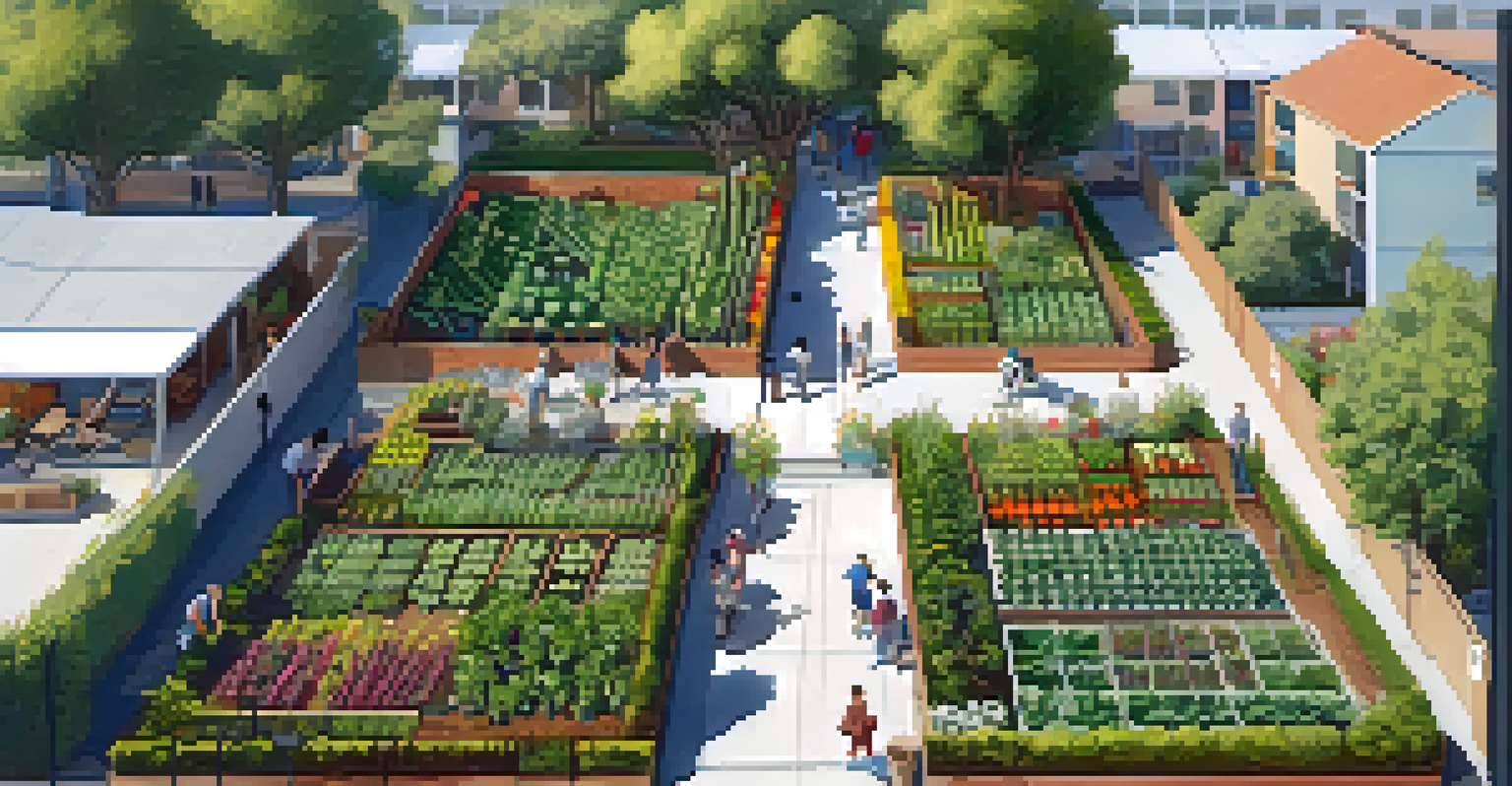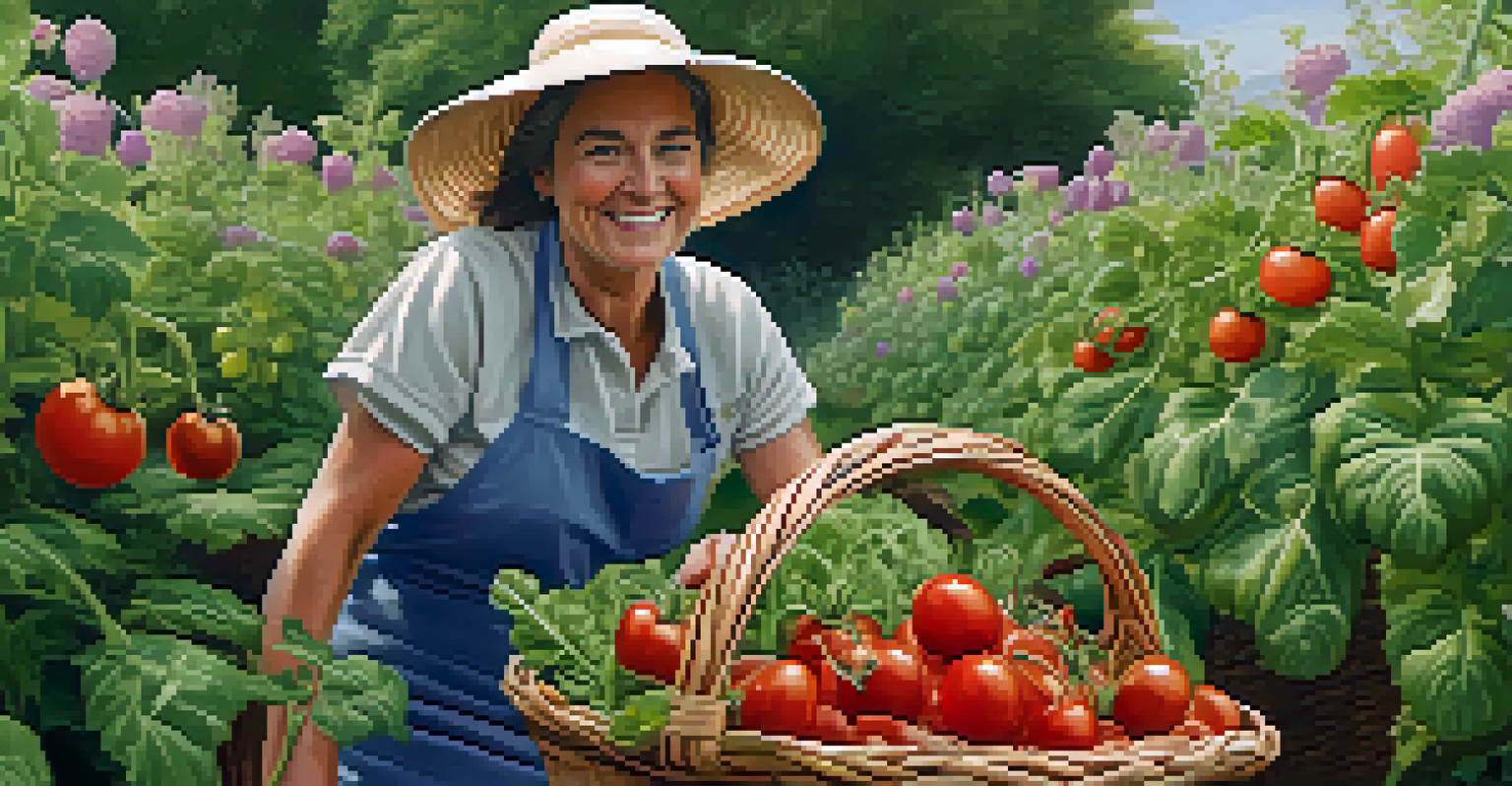The Role of Community Gardens in Santa Monica's Food System

What Are Community Gardens and Their Purpose?
Community gardens are collaborative spaces where individuals come together to grow fruits, vegetables, and flowers. They often transform vacant lots or underutilized spaces into vibrant green areas. The purpose of these gardens goes beyond just growing food; they foster community spirit and promote sustainability.
Gardening adds years to your life and life to your years.
In Santa Monica, community gardens serve as a vital component of the local food system, addressing food insecurity and providing fresh produce. They create opportunities for residents to connect with nature and each other, encouraging a sense of belonging. This collaboration not only enriches the soil but also the community's social fabric.
Moreover, community gardens educate individuals about healthy eating and gardening practices. They often host workshops and events, making gardening accessible to all skill levels. By nurturing both plants and relationships, these gardens cultivate a thriving ecosystem in Santa Monica.
The Environmental Impact of Community Gardens
Community gardens play a significant role in enhancing local biodiversity and improving air quality. By incorporating various plants, they attract pollinators like bees and butterflies, which are essential for a healthy ecosystem. This diversity helps to create a balanced environment that supports wildlife.

These gardens also contribute to urban greening, which can reduce the heat island effect commonly seen in cities. By planting more greenery, community gardens help to cool the area and improve overall air quality. This is particularly important in regions like Santa Monica, where residents seek a healthy living environment.
Community Gardens Foster Connections
These gardens bring residents together, promoting collaboration and a sense of belonging through shared gardening experiences.
Additionally, community gardens promote sustainable practices such as composting and organic gardening. By encouraging these eco-friendly behaviors, they empower residents to make conscious choices that benefit the environment. This collective effort has a lasting impact on Santa Monica's ecological health.
Addressing Food Insecurity Through Community Gardens
Food insecurity remains a pressing issue in many urban areas, including Santa Monica. Community gardens provide a direct solution by making fresh produce more accessible to residents. They allow individuals to grow their own food, reducing dependency on grocery stores and ensuring a supply of healthy options.
The best way to find yourself is to lose yourself in the service of others.
Moreover, these gardens often partner with local food banks and organizations to distribute surplus produce to those in need. This collaboration not only helps to fight hunger but also builds a sense of solidarity within the community. Through shared efforts, residents can ensure that everyone has access to nutritious food.
Community gardens also serve as educational hubs, teaching residents about food production and nutrition. Workshops on growing techniques and cooking classes can empower individuals to make healthier choices. This knowledge can have a ripple effect, fostering a culture of health and wellness in Santa Monica.
Building Community Through Shared Spaces
One of the most significant benefits of community gardens is their ability to bring people together. These shared spaces encourage collaboration, allowing residents to connect over a common goal—growing food. This sense of belonging can strengthen neighborhood ties and create lasting friendships.
In Santa Monica, community gardens often host events, such as harvest festivals or potluck dinners, where residents can celebrate their efforts. These gatherings foster a sense of community pride and encourage residents to invest in their local environment. They become more than just gardens; they transform into vibrant community hubs.
Addressing Food Insecurity Locally
Community gardens provide fresh produce access and partner with local organizations to combat hunger in Santa Monica.
Additionally, community gardens can serve as a platform for cultural exchange. Residents from diverse backgrounds can share their gardening traditions, recipes, and knowledge. This exchange enriches the community, highlighting the beauty of diversity in Santa Monica.
Promoting Sustainable Practices in Gardening
Community gardens are excellent platforms for promoting sustainable gardening practices. By prioritizing organic methods, they demonstrate how to grow food without harmful pesticides or fertilizers. This not only benefits the environment but also supports the health of those consuming the produce.
In Santa Monica, community gardeners often implement composting systems, recycling organic waste into nutrient-rich soil. This practice reduces landfill waste while enhancing soil health, creating a closed-loop system that exemplifies sustainability. Residents learn that gardening can positively impact the environment and their health.
Furthermore, community gardens encourage water conservation techniques, such as drip irrigation and rainwater harvesting. These methods are essential in California's water-scarce environment and promote responsible resource use. By educating residents on these practices, community gardens lay the groundwork for a more sustainable future.
The Role of Local Government in Supporting Gardens
Local government plays a crucial role in the success of community gardens in Santa Monica. By providing land access, funding, and resources, they empower residents to create and maintain these spaces. Support from the government can make a significant difference in the longevity and impact of community gardens.
In recent years, Santa Monica's city council has recognized the importance of community gardens in enhancing the local food system. They have initiated programs to promote urban agriculture and provide grants to community organizations. This partnership fosters an environment where gardens can thrive and benefit the community.
Sustainable Practices for a Greener Future
By promoting organic gardening and resource conservation, community gardens contribute to environmental sustainability and public health.
Moreover, local government can help raise awareness about the benefits of community gardens through outreach and education. By highlighting success stories and providing resources, they encourage more residents to get involved. This collaboration between the community and government can create a lasting impact on Santa Monica's food system.
Future of Community Gardens in Santa Monica
As the demand for local food sources continues to grow, the future of community gardens in Santa Monica looks promising. With increasing awareness of health and environmental issues, more residents are likely to seek out these collaborative spaces. This trend can lead to the expansion of existing gardens and the creation of new ones.
Future community gardens may also incorporate new technologies and sustainable practices. From vertical gardens to hydroponics, innovative methods can maximize space and resources. This evolution can attract a diverse group of gardeners, fostering creativity and collaboration.

Ultimately, the future of community gardens in Santa Monica lies in their ability to adapt and grow with the community's needs. By continuing to promote inclusivity and sustainability, these gardens can remain a vital part of Santa Monica's food system for years to come.